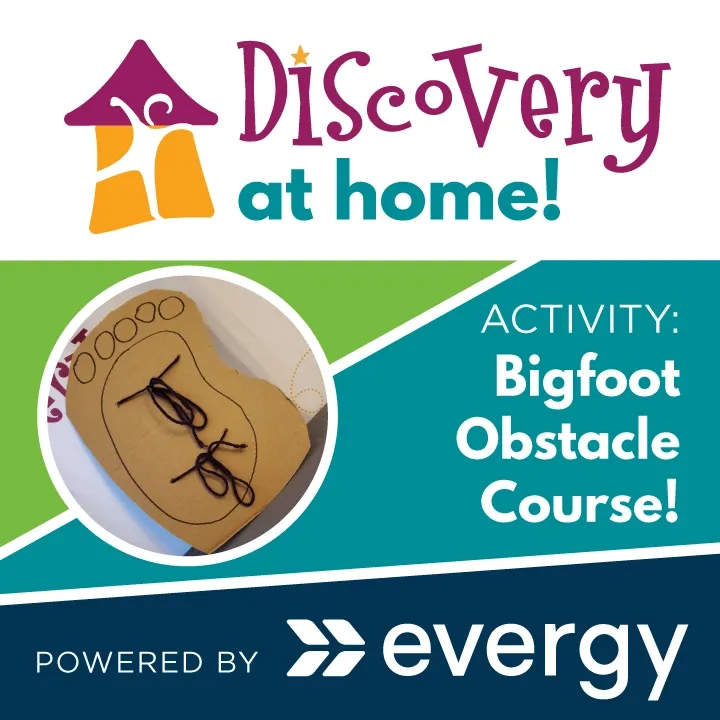What’s better than an obstacle course? An obstacle course with big feet!
Join Caitlin Luttjohann, Director of STEAM Education at the Kansas Children’s Discovery Center for some silly fun today and also gets kids doing some spatial or visual thinking. Being able to imagine the positions of objects and how they interact is an important skill for learning math.This activity is powered by our friends at Evergy.

What you need:
- Cardboard.
- Yarn, ribbon or rope.
- Scissors.
- Pencil.
- Markers.
- Tape.
- Items to create an obstacle course on the floor (pillows, toys, etc.).
Directions:
- Draw a large foot onto the cardboard. You want this to be a couple inches larger than your foot.
- Cut around the foot outline so that you can still see the foot after cutting it out.
- Step down on top of the cardboard foot and use a marker to show where you should poke holes so you can tie the cardboard to your foot.
- Use scissors or a pencil to poke four holes through the cardboard.
- Cut four pieces of yarn.
- Thread the yarn through each hole so that only an inch remains on the bottom.
- Tape down each yarn piece so it stays.
- You should be able to make two ties on the foot so it stays attached to your foot. (If the yarn doesn’t work, use painter’s tape to tape it to your foot).
- Repeat steps 1-8 to make the second foot.
- Before you put the bigfoot feet on, create your obstacle course! Lay out pillows to dodge, use painter’s tape for you to follow along, etc.
- When the obstacle course is set, put your bigfoot feet on and head through the obstacle course!
Ways to Expand the Activity:
- Try the course backwards. The bigfoot feet can make it tough, but is it easier to walk backwards with bigfoot feet or is it easier to walk forwards? Why?
- Make other feet that are different sizes. Which ones make it easier to get through the obstacle course? Why?
What Kids Learn:
- Experimentation! When kids experiment, they’re learning how to learn. Failure is an important part of experimenting, so let kids try things that won’t work. It’s how they figure things out!
- Basic engineering skills. Engineers solve problems with constraints. They learn to solve problems by using the engineering design process: asking questions, coming up with solutions, building, testing and improving.
- Spatial or visual thinking. Being able to imagine the positions of objects and how they interact is an important skill for learning math.
- Fine motor skills. Kids practice using the small muscles in their hands later used for writing.